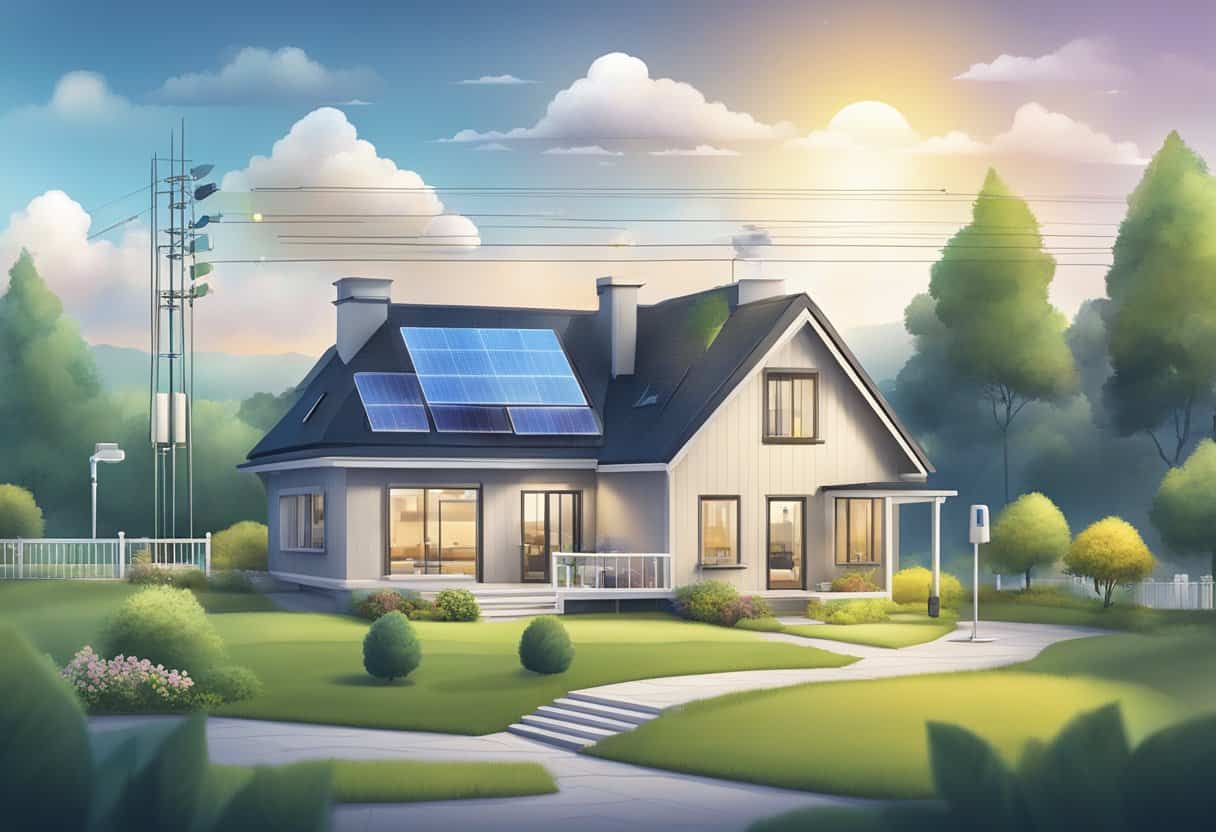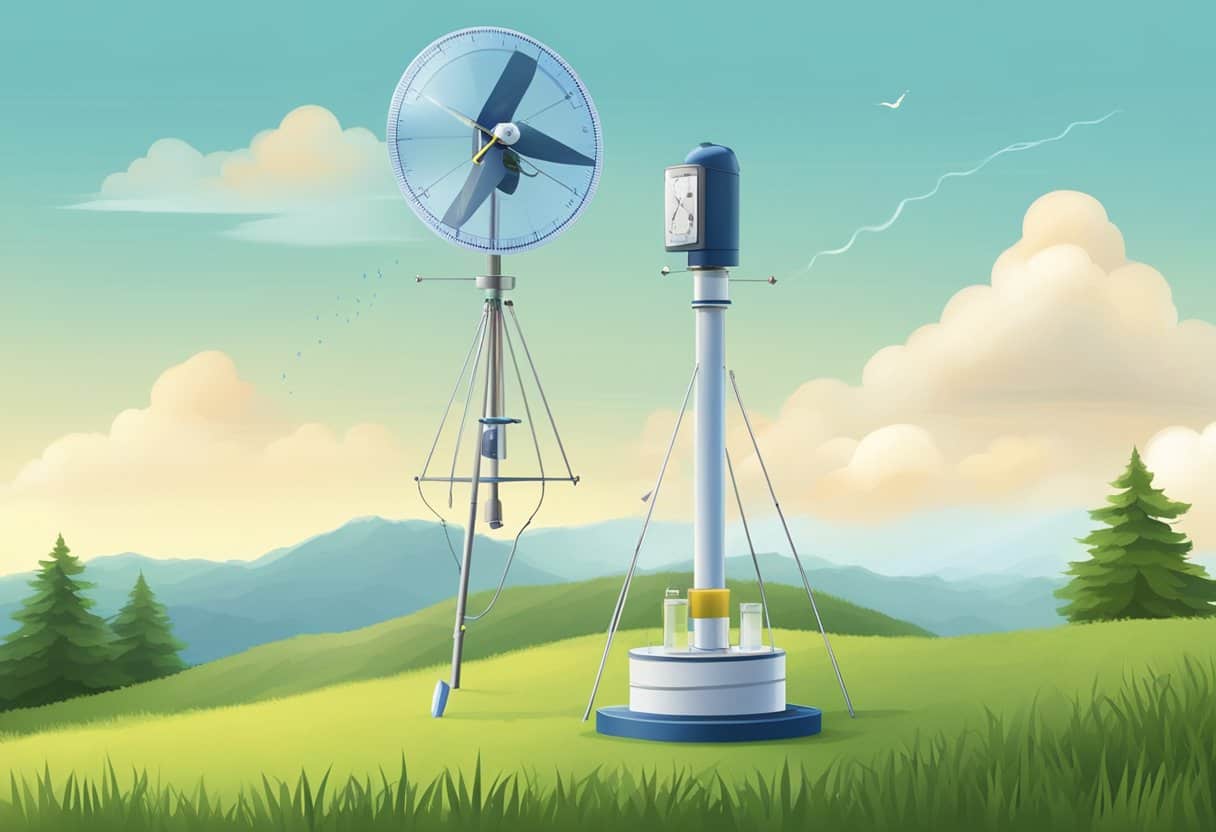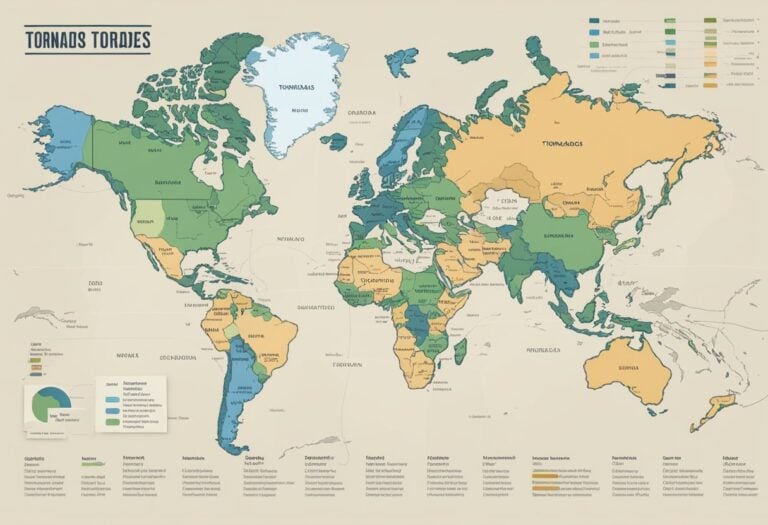A weather station is a facility, either on land or at sea, equipped with instruments and equipment to observe atmospheric conditions and provide weather data.
This data contributes significantly to the forecasting of weather and the study of the climate. By measuring variables such as temperature, humidity, atmospheric pressure, precipitation, wind speed, and wind direction, weather stations offer a localized snapshot of the weather at a specific location.
These stations range from simple setups for personal use to sophisticated, high-tech systems for professional meteorological centers. The advancement of sensor technology has also led to the development of smart weather stations that seamlessly integrate with smart home systems, allowing for real-time weather monitoring and automated responses to changing environmental conditions.
Whether you are a gardening enthusiast, a commercial farmer, or simply a weather hobbyist, there is a weather station designed to meet your specific needs.
A weather station observes atmospheric conditions, aiding in weather forecasting and climate study. It measures temperature, humidity, pressure, and more, ranging from simple home setups to advanced systems. These stations are crucial for understanding local weather patterns and preparing for weather-related events.
Understanding Weather Stations
Weather stations are instrumental in collecting data about the climate and atmospheric conditions. They provide a comprehensive snapshot of the environment, which is crucial for weather forecasting, scientific research, and public safety.
Types of Weather Stations
Weather stations range from simple home-based units to sophisticated professional setups. Home weather stations, like the popular Ambient Weather WS-2902C, are designed for personal use and typically measure parameters like outdoor and indoor temperature, humidity, and wind speeds. On the other end of the spectrum, systems such as the Davis Vantage Vue and the Tempest Weather System are more advanced, offering detailed insights for enthusiasts and meteorologists alike.
Key Components and Sensors
The core of any weather station is its array of sensors, each designed to capture specific environmental data:
- Temperature: Measured by a thermometer, providing indoor and outdoor temperature readings.
- Humidity: Recorded by a hygrometer to gauge moisture in the air, significant for understanding perceived temperature and comfort levels.
- Barometric Pressure: The barometer tracks changes in atmospheric pressure, offering valuable clues for weather prediction.
- Wind Speed and Direction: Captured by an anemometer and a wind vane, these measurements are critical for understanding weather patterns.
- Rainfall: A rain gauge collects and measures precipitation, contributing data on the water cycle’s impact on climate.
- UV and Solar Radiation: Specialized sensors for more comprehensive stations, such as the Ambient Weather WS-2000 and WS-5000, measure these parameters for a complete view of sun-related weather influences.
Understanding the components and their functions can help you select the right weather station for your needs, be it a simple La Crosse Technology unit for casual observation or a more advanced setup like the Netatmo Weather Station for in-depth climate studies.
Data Collection and Transmission
In modern weather stations, data collection and transmission are crucial components that enable accurate weather monitoring and predictions. These systems harness various forms of connectivity to ensure that you receive timely and relevant weather data.
Signal Transmission
Your weather station likely utilizes wireless or Wi-Fi connectivity to transmit signals. This enables devices like the Ambient Weather Network to send collected data seamlessly to the internet. Smart home systems can be integrated with weather apps through this technology, allowing you to track local weather conditions in real-time. Wireless connections, whether via proprietary frequencies or Wi-Fi, are essential for transmitting data to platforms such as Weather Underground, where it becomes accessible globally.
- Wireless Connectivity: Ensures real-time data updates and remote access.
- Wi-Fi Compatibility: Allows for integration with household networks and smart home ecosystems.
Data Display and Storage
Once collected, weather data is typically displayed on an LCD display which allows for immediate local access to current conditions. Simultaneously, the data can be stored either locally in the device or transmitted to cloud-based services like the Weather Cloud. This dual functionality means you’re able to view historical weather reports and conduct long-term monitoring.
- LCD Display: Offers clear real-time data presentation for immediate viewing.
- Connectivity & Storage: Weather data is shared across networks or stored for later analysis and record-keeping.
- Smart Home Integration: Devices can send alerts to your mobile or smart home system, keeping you updated on ambient conditions.
Integration with Smart Home Systems

Smart home systems have evolved to seamlessly incorporate environmental monitoring tools like weather stations. By integrating a weather station like the WeatherFlow Tempest or the Netatmo weather station, you can have a sophisticated setup that combines convenience with functionality.
Smart Home Compatibility
Your smart home ecosystem can greatly benefit from the addition of a weather station. Here’s how compatibility works across various platforms:
-
Amazon Alexa: By saying “Alexa, ask WeatherFlow Tempest what’s the wind speed?” or “Alexa, what’s the temperature outside?” you can receive real-time data from your weather station. Integration is often plug-and-play, making setup straightforward.
-
Google Assistant/Google Home: Similar to Alexa, you can access your weather station’s data by using voice commands like “Hey Google, ask Netatmo what the humidity is right now.”
-
Apple HomeKit: Some weather stations offer support for Apple HomeKit. This allows you to request data through Siri or see readings directly on your iOS devices.
-
Features and Alerts: Weather stations offer various features such as displaying temperature, humidity, and wind speed. They can also send alerts to your smart devices, keeping you informed about significant weather changes.
-
Expandability: The ability to add extra modules or sensors to your weather station ensures that your system grows with your needs, offering enhanced functionality as your smart home ecosystem expands.
-
IFTTT: Integration with If This Then That (IFTTT) allows for customized automations. For instance, if the outdoor temperature drops below a certain point, IFTTT can trigger your smart thermostat to adjust the heat accordingly.
-
Smart Home Support: Beyond voice assistants, weather stations can integrate into broader smart home platforms and can interact with other smart devices such as sprinklers and blinds, optimizing them according to the weather conditions.
Selecting a Weather Station
When you’re in the market for a weather station, it’s crucial to focus on the specific features that meet your needs, whether you’re a weather enthusiast or a farmer looking for precise data.
Factors to Consider
- Accuracy: This is the heart of any weather station. You need to ensure that the device provides precise readings of temperature, humidity, and other relevant data.
- Durability: Your weather station should be able to withstand the elements it’s meant to measure, especially if it will be exposed to harsh weather conditions.
- Power Source: Consider whether the station uses batteries, solar power, or a mains supply, and how this fits with your installation site.
- Expandability: Some models allow for the addition of sensors, like soil moisture, soil temperature, and leaf wetness, which can be particularly useful for farmers.
- Lightning Detection: A feature that could be a lifesaver in areas prone to thunderstorms.
Top Weather Station Models
La Crosse Technology C85845-1
- A popular choice for home users due to its easy setup and comprehensive data display.
Davis Instruments Vantage Vue
- Offers top-tier accuracy and durability for serious weather monitoring.
For those seeking the best home weather stations, balancing these factors with the specific data you aim to collect, such as soil conditions or severe weather alerts, is key to making an informed decision.
Frequently Asked Questions
Weather stations play a vital role in data collection for weather predictions and climate research. Understanding the different aspects of weather stations can help you appreciate their importance and functionality.
What purposes do weather stations serve?
Weather stations serve to monitor and record various meteorological elements such as temperature, humidity, wind speed, and atmospheric pressure. This data is crucial for weather forecasting, climate study, and in various fields like agriculture, aviation, and disaster management.
Which instruments are essential for a complete weather station?
A complete weather station typically includes a thermometer for measuring temperature, a barometer for atmospheric pressure, a hygrometer for humidity, an anemometer for wind speed, and a rain gauge for precipitation measurements.
What are the main differences between various types of weather stations?
Manual weather stations require human observation for data recording, whereas automatic weather stations (AWSs) operate with sensors and remote transmission capabilities. Traditional stations often use analog instruments, while digital stations provide more precision and can include advanced features like wireless data transfer.
What factors should be considered when choosing the best weather station for home use?
When selecting a weather station for home use, consider the type of data you want to collect, the station’s ease of installation and use, its connectivity options for data sharing, and the overall reliability and accuracy of the instruments.
How does the location of a weather station affect its data accuracy?
The accuracy of weather station data can be significantly influenced by its location. Placement away from obstructions and artificial heat sources reduces data distortion. Proper exposure to the elements is necessary for accurate readings.
What is the significance of weather stations in the context of agricultural planning?
Weather stations hold significant importance in agricultural planning by providing data that helps farmers make informed decisions about planting, irrigation, and harvesting times, ultimately leading to better crop yields and resource management.







